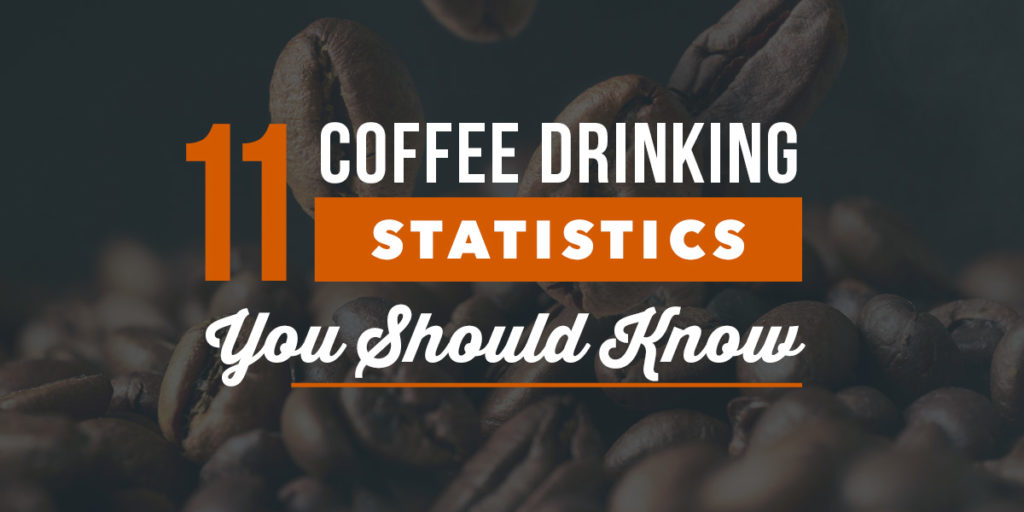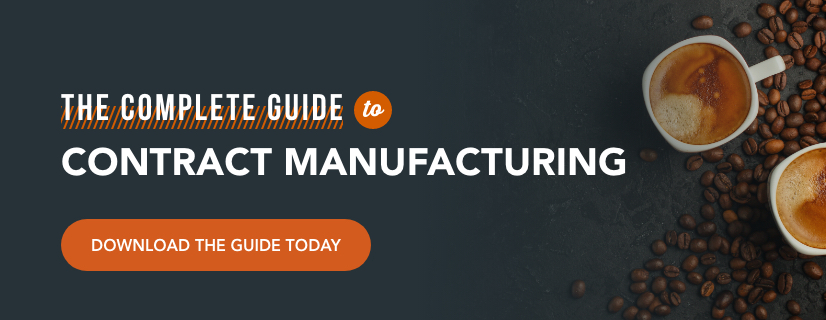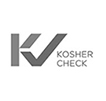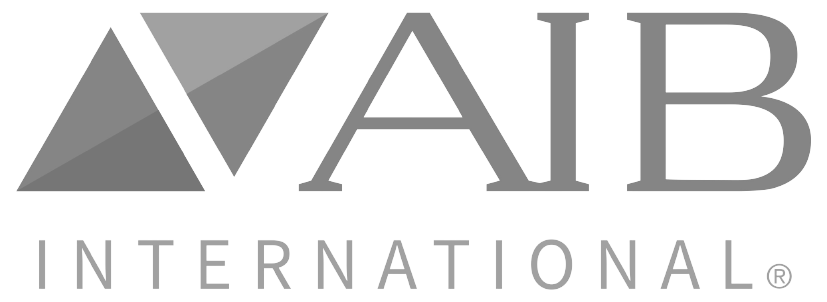
It’s no secret that Americans love their coffee, but how deep does this national coffee commitment run, and how does it affect coffee industry trends? Examining specific statistics can help coffee brands know how to appeal to the average American coffee drinker and market their products better.
11 Essential Coffee Drinkers Statistics
If you’re invested in the coffee industry, this ultimate compilation of coffee consumption statistics is for you. From the U.S. coffee market size to which demographic drinks the most coffee, these coffee drinking statistics provide valuable insight into the industry.
Here’s a look at everything you could possibly want to know about U.S. coffee consumption and how these numbers impact coffee brands.
1. Coffee Is the Second Most Consumed Beverage in the U.S., Behind Water
While water is the most frequently consumed beverage in the country, with 66% of Americans drinking it daily, coffee is close behind, with 63% of Americans having a mug of joe each morning. This means over half of the nation consumes coffee on a regular basis, which is the highest rate in about a decade.
Coffee may be the second most popular drink among Americans because the caffeinated beverage has been known to decrease tiredness and increase alertness in the morning. Tea, which is also commonly caffeinated, is a close third, with 47% of the nation’s population pouring a cup of tea each day.
2. Americans Drink 400 Million Coffee Cups a Day
Each day, U.S. citizens consume a total of 400 million cups of coffee. Individually, an American coffee drinker consumes about three cups of coffee per day. These numbers add up, considering about 150 million Americans are avid coffee drinkers. Drinking three cups of coffee each day keeps Americans within the U.S. Food and Drug Association (FDA) recommended caffeine limit of 400 milligrams per day, which amounts to about four cups of regular coffee.

3. Americans Drink 146 Billion Cups of Coffee Every Year
Add up all of those millions of cups of coffee consumed by Americans each day, and you’ll get a yearly average of 146 billion cups of coffee for the country. Per capita, the annual U.S. coffee consumption is about nine pounds. Amazingly, this only lands the U.S. at 25th on the list of worldwide annual coffee consumption. Finland leads global coffee consumption per capita with around 26.5 pounds annually.
4. The U.S. Coffee Industry Is Worth $80 Billion
Along with powering you through your day, coffee helps power the U.S. economy. With revenues reaching over $80 billion, the U.S. has the largest coffee market worldwide by far. As if it weren’t contributing to the economy enough already, the U.S. coffee market is projected to grow by nearly 5% by 2025.
These numbers mean coffee influences communities across the country in amazing ways, including generating tax dollars and creating more job opportunities. Specifically, coffee creates multiple types of jobs, from barista positions to coffee roasters. Coffee also touches other industries, such as increasing the demand for cream and dairy farmworkers to boosting the need for more supermarket workers to stock shelves with coffee and coffee-related products.

5. Nearly 80% of Americans Drink at Least One Cup of Coffee at Home
Of those Americans who drink coffee regularly, about 80% of them drink at least one cup of coffee at home.
Unsurprisingly, a growing number of U.S. coffee drinkers are also willing to buy coffee machines that will help them recreate an authentic coffee shop experience at home. For instance, at-home espresso machines and single-serve coffee brewers have been trending significantly. Despite having been around for quite some time, the average daily use of single-cup brewers in the U.S. jumped from 19% to 26% within the past few years.
6. Drip Coffee and Single-Serve Pod Brewers Are the Most Common Preparation Methods
While there are many ways to make a pot of joe at home, drip coffee and single-serve pod brewers are the most popular at-home coffee preparation methods for Americans. In 2020, 41% of U.S. coffee drinkers choose to brew their coffee with a drip coffee maker. Even specialty coffee fanatics chose to use a drip coffee maker most often, with the daily use of more niche coffee preparation methods ranking far lower — specifically, 4% for a French press and 3% for a percolator.
These statistics indicate that Americans prioritize speed and convenience when brewing their coffee at home. However, they are not willing to compromise on quality and taste completely. American coffee lovers draw the line at instant coffee, with only 5% of people consuming instant coffee within the past year.

On the other hand, coffee drinkers brewed traditional coffee about 43% of the time, making it the most popular form of coffee to prepare. Newer coffee machines like Keurig and Nespresso are the perfect solution for American coffee drinkers because they provide a way to enjoy high-quality coffee without requiring too much time or effort. In this sense, it’s no surprise that single-pod brewers are so popular in households across the country.
7. Most Americans Buy Their Coffee Beans at the Grocery Store
About 67% of Americans purchase coffee beans at their local grocery store. An additional percentage goes to discount supermarkets for their coffee beans. Otherwise, smaller percentages of U.S. coffee lovers buy their beans online or go to convenience stores. These trends show that Americans still enjoy the traditional method of browsing the grocery store aisles for their favorite coffee brand.
The COVID-19 pandemic also influenced how Americans shop for their coffee. During the pandemic, more than 40% of U.S. coffee drinkers purchased types of coffee they had not tried before. Perhaps, with more time on their hands to experiment with different brewing methods and little else to entertain them, shut-in Americans were willing to get more adventurous with their coffee choices. Regardless of the reasoning, U.S. coffee drinkers are more willing than ever to branch out in terms of coffee brand, roast style, flavoring, and more.
8. Gourmet Coffee Is on the Decline
With the rise of at-home brewing, the demand for gourmet coffee has fallen. Specialty drinks like lattes, cappuccinos, and cold brew are no longer the hot commodity they once were. Only about 36% of all coffee drinkers are likely to choose a cup of gourmet coffee. Instead, consumers are seeking traditional coffee brewed from premium beans or grounds. This number has come down considerably from the 41% it was at in 2017.
Once again, the pandemic seems to be the main factor in this downward trend. Since becoming more comfortable with brewing their own coffee at home, nearly 70% of American coffee drinkers say they do not plan on going to coffee shops anymore. These numbers indicate that Americans won’t be lining up at coffee shops like they once did, even once the pandemic is over.
Instead, U.S. coffee drinkers plan on sticking with the at-home brewing methods they have been learning to perfect since the pandemic started. This preference for preparing coffee at home makes sense, considering the costs you can save and all of the ways you can customize your cup of joe when you’re the barista.
9. Americans Aged 60 or Older Drink the Most Coffee
The most devoted demographic of coffee drinkers in the U.S. is those aged 60 or older. Around 72% of Americans who are 60 or older drink coffee every single day. On the other hand, only about 47% of those who are between 18 and 24 years old drink coffee regularly, making it the least coffee-crazed demographic in the country.

When it comes to the timing of older Americans’ routine cup of coffee, 44% of U.S. adults have it with their breakfast. Drinking coffee with breakfast has evolved into an American tradition because the beverage’s stimulatory effects can help kickstart the day. However, nearly half of Americans will still drink coffee after they’ve had breakfast.
10. Millennials Drink the Most Coffee at Coffee Shops
Millennials drink more coffee at coffee shops than any other generation. Although gourmet coffee is generally on the decline, millennials are doing their best to keep it afloat. More specifically, about 36% of those between the ages of 25 and 40 order specialty drinks like lattes, cappuccinos, and the like.
When you recognize that 22% of Millennials say they like espresso, all of these specialty drink orders make sense. However, only about 13% of U.S. coffee drinkers use espresso machines at home, meaning most gourmet coffee aficionados must go to a coffee shop to enjoy an espresso-based beverage.
11. Americans Prefer Environmentally and Ethically Sourced Coffee
Coffee drinkers are becoming increasingly concerned about how their morning brew gets to their cup. Factors like how well farmworkers are treated and whether the coffee beans were grown in line with sustainable practices have an impact on how coffee fans choose their favorite brand. In fact, people are willing to pay $1.36 more per pound of coffee if they can trust that it has been produced in an eco-friendly and ethical way.
Coffee consumers aged 19-24 years old, in particular, care a great deal about how their coffee was sourced and intentionally buy from coffee brands recognized for their ethical and environmentally friendly practices. Millennials also pay attention to how their coffee is sourced and seek out coffee brands with ethical certificates.
Contact the private label coffee experts today
What These Coffee Industry Statistics Mean for Coffee Brands
Coffee brands can use these coffee consumptions statistics to make better-informed decisions about how to manufacture and promote their products, as well as to help structure their brand strategies and fuel their sales.
When to Start a Coffee Brand
Now is the perfect time for coffee brands to release their products. The market is more prime than ever for private-label coffee brands. As the demand for gourmet coffee and coffee shops continues to decline, coffee brands are poised to capitalize on this trend post-pandemic and beyond. In addition, the rising demand for fresh ground coffee pods opens the door for coffee brands to deliver customers a convenient, premium coffee experience.
What Kind of Coffee to Offer
Because the market for coffee beans and grounds is thriving right now, it can be difficult to determine which type of coffee to focus on. Deciding what product is best for your brand to offer starts by understanding the differences between pods for Nespresso and cups for Keurig. Once you’ve settled on which type of coffee item to produce, you can begin thinking more about the details of your blend. Work through the coffee’s flavor profile, ratio, and roasting to find the ideal blend for your brand.

How to Market Your Coffee Brand
Now that you’re aware most Americans are purchasing their coffee at the grocery store, you can concentrate on getting your brand’s coffee products into stores. The steps for getting your coffee brand on store shelves include studying your target market, perfecting your coffee blend, knowing your retailers, creating your packaging, pricing your product, building your brand, getting noticed by local retailers, and following up with them.
If you want to give your coffee products an edge in the market, try embracing current trends and creating coffee flavors for different seasons. Coffee fanatics tend to go so wild for limited edition products that seasonal flavors almost market themselves. Whether it’s pumpkin spice in the fall, peppermint mocha in the winter, or another seasonal blend, keeping your brand in season can help you gain traction with coffee consumers.
How to Target Coffee Demographics
Before developing specific marketing tactics, a coffee brand must first decide which demographic it wants to target. For instance, based on the statistics above, you’ll want to use recyclable packaging for your brand if you want to appeal to younger coffee drinkers. In addition, simplistic packaging will likely draw older coffee lovers.
Most importantly, choose your brand’s target demographic and commit to it. In a sea of coffee product options, your brand needs to be unique if you want to stand out. Targeting a demographic will require some extra research. For example, if you’re trying to woo a health-conscious crowd, find out what ingredients health enthusiasts want in their coffee. Whatever your brand’s angle is, make sure you embrace it full-heartedly.
Partner With Joe’s Garage Coffee to Promote Your Coffee Brand
If you’re ready to get your coffee brand into the hands of more daily coffee drinkers, let Joe’s Garage Coffee meet your manufacturing needs. Our services include roasting beans to order, custom blending, co-packaging, contract manufacturing, and more. We provide your brand with in-demand coffee products like cups for Keurig, pods for Nespresso, and compostable pods, to help your brand attract a larger following of loyal customers.
To learn more about building your coffee brand, contact Joe’s Garage Coffee today.








